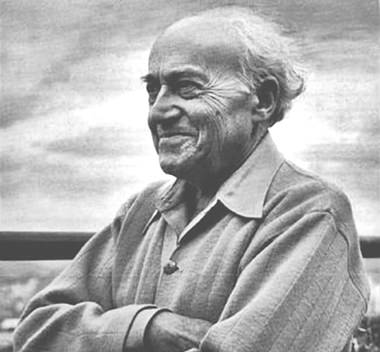When the word Switzerland is mentioned what springs to mind? Perhaps lakes and mountains, or if you’re a food-orientated type, perhaps it’s chocolate and cheese. You might be surprised to know that the country produces over four hundred varieties of cheese, although we don’t see many of them in these parts. Then there’s fondue and of course rösti – the up-market version of hash-browns. Or maybe you’d think about those absurdly expensive Swiss watches. Don’t mention cuckoo clocks because some clever dick is bound to tell you that they originally came from Germany.

One thing that probably won’t spring to mind is a long list of Swiss classical composers. With neighboring countries like Germany, Austria and Italy you can make a list of composers as long as your arm, but not so with Switzerland. According to historians Denis Arnold and John Borwick, musical development there was hindered not only by its mountainous terrain but also by the lack of wealthy patronage which had prevailed in neighboring countries for centuries.
The early developments in Swiss choral music ended abruptly with the Reformation. The stern-faced reformer and kill-joy Ulrich Zwingli detested elaborate church music and insisted on simple chants. Church organs were unceremoniously hauled away removed or even destroyed. Unlike other countries, there was no encouragement to write church music and no wealthy royal patrons to pay for anything else. Anyone who wanted to write music for a living simply drifted off elsewhere. Classical music in Switzerland never really found its feet until the twentieth century.
Wikipedia lists 265 Swiss composers, the majority of the twentieth century but it’s unlikely you’ll recognise many names. One of the most famous is Arthur Honegger, best-known for his Pacific 231, an atmospheric symphonic poem inspired by the eponymous locomotive. Then there’s Ernest Bloch, Frank Martin and Rolf Liebermann. Oh yes, I mustn’t forget the Renaissance composer Ludwig Senfl – one of those who left Switzerland in search of better things. He became the music director to the court of Maximilian I in Germany though you’re more likely to encounter his name in history books rather than in concert programmes.
Ernest Bloch (1880-1959): From Jewish Life. Vid Veljak (vlc), Zagreb Soloists (Duration: 09:29; Video: 1080p HD)
Ernest Bloch was born in Geneva and studied composition with Emile Jaques-Dalcroze, who later became better known for his work in music education. As a teenager Bloch moved to Brussels and studied with the legendary Belgian violinist Eugène Ysaÿe. He eventually settled in America in 1917.
Bloch composed the suite From Jewish Life in 1924. If you know Max Bruch’s work for cello and orchestra entitled Kol Nidrei which is based on a mournful melody from the Yom Kippur service, Bloch’s haunting music will seem strangely familiar. The composer himself wrote “it is neither my purpose nor desire to attempt a reconstruction of Jewish music… I am not an archaeologist; for me the most important thing is to write good and sincere music.” Bloch’s role as a composer was to write music from the heart; music which spoke of passion and sorrow.
This beautiful work has declamatory melodies and characteristic rich harmonies within an atmosphere of intense sadness. There are three movements entitled Prayer, Supplication and the plaintive Jewish Song beautifully performed by this young, talented Croatian cellist. The second movement contains echoes – intentional or otherwise – of Wieniawski’s second violin concerto.
Frank Martin (1890–1974): Concerto for Violin and Orchestra. Felix Froschhammer (vln), Ensemble Symphonique Neuchâtel cond. Alexander Mayer (Duration: 33:13; Video: 1080 HD)
The name sounds so terribly English, yet Frank Martin was a true European. Like Bloch he was born in Geneva; the tenth and youngest child of a clergyman’s family. He was attracted to music as a child and by the age of nine he had started composing. When he was twelve, he discovered the music of J.S. Bach which had a profound impression on him for the rest of his life. He turned out to be a young man of talent, studying mathematics and physics at the University of Geneva and at the same time studying piano and composition. Between 1918 and 1926 he lived in Zurich, Rome and Paris, later moving to Amsterdam.
This concerto dates from 1951 and like much of Martin’s music has a sense of organic growth. The slow movement (at 15:11) is particularly rewarding. Martin developed his own intensely personal musical idiom that blended tonality with a kind of modified serial technique borrowed from Arnold Schönberg. It’s been described as “tonal atonality”. Perhaps that was his role as a composer.
nyway, if it all sounds a bit daunting, don’t be put off. I admit that this concerto isn’t chewing-gum music, but it’s profoundly lyrical and has many compelling moments. It really wants to tell you something. You just need to give it the chance.
 |
 |
 |





